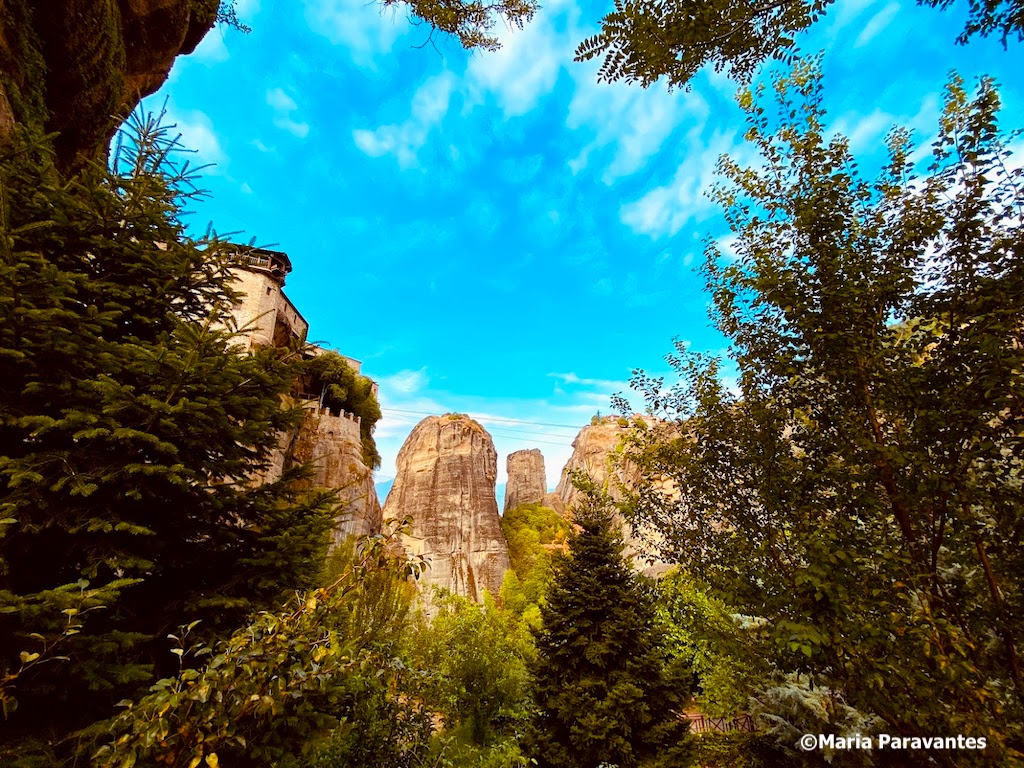
Ever wanted to reach out to the universe? To touch the stars? To be one with the divine? To push yourself out of the box and into the limitless possibilities of life. Then a journey to Meteora in Greece should be the next thing you plan to do.
Meteora is not your typical Greek sea and sun getaway complete with great Greek food, lively music, dance and drinking. No sir. Meteora is a once-in-a-lifetime experience bringing you as close to the mystical as possible. All you need to do is look up (or down depending on where you’re at).
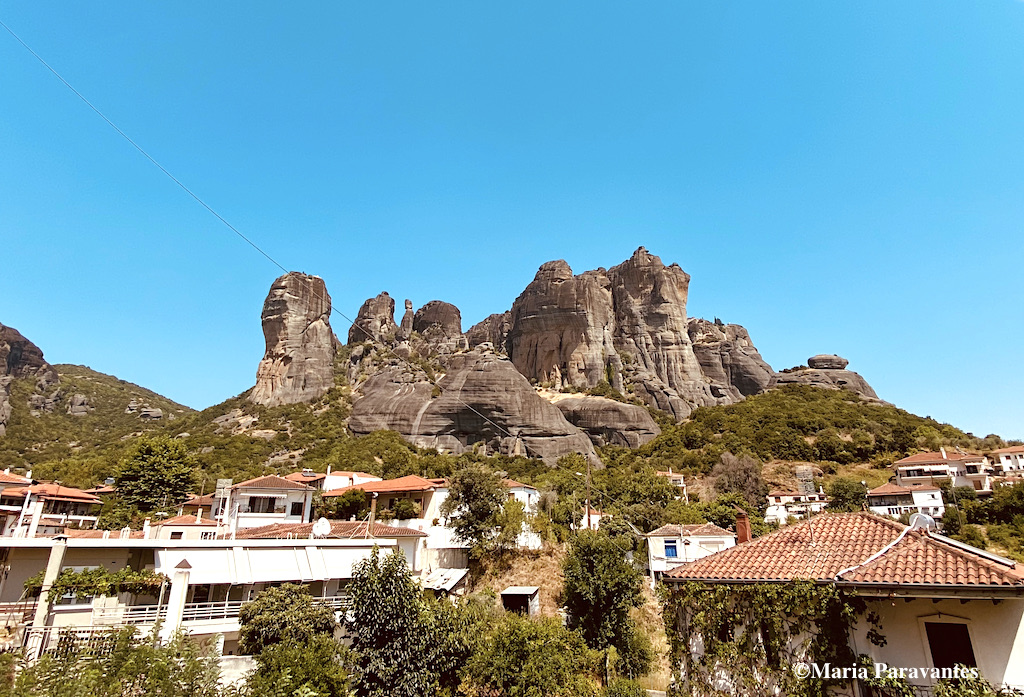
👉🏼 Find the best hotel deals for you
Meteora: Look Up to the Sky
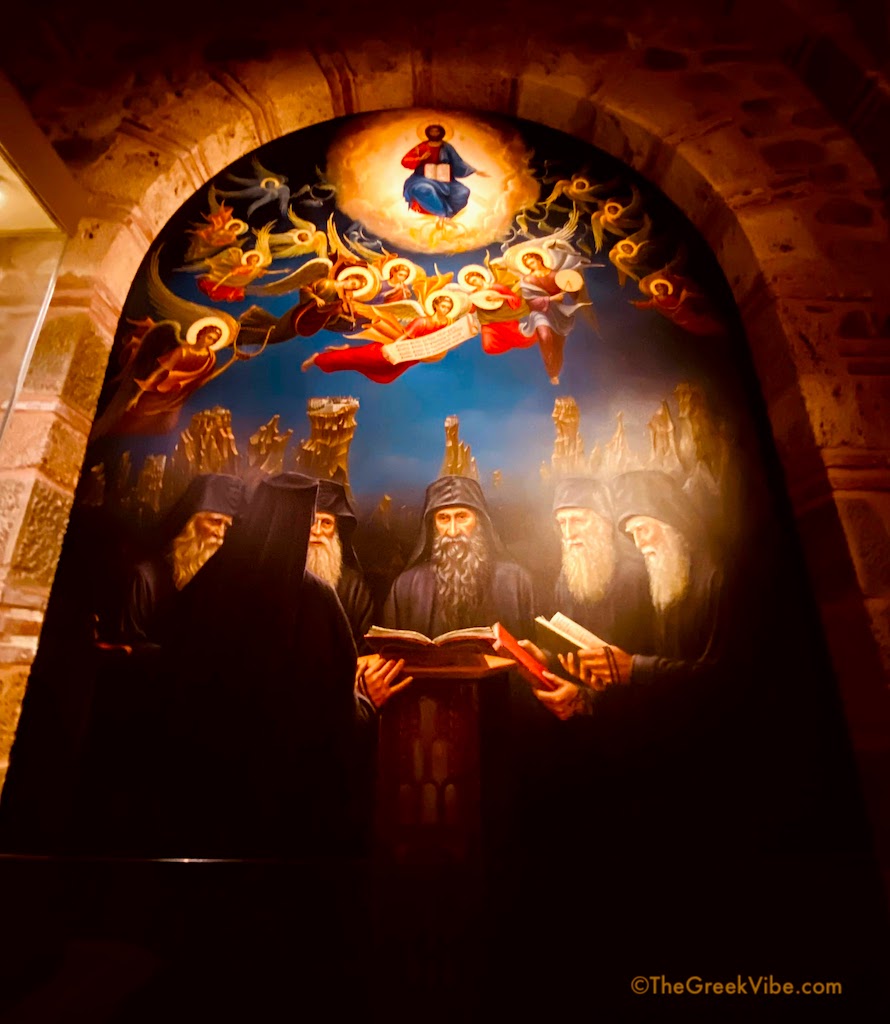
You’ve rented a car and taken the highway from Athens traveling towards Central Greece or you’ve booked a hassle-free private day tour, where one of the world’s greatest wonders has stood for millions of years. So much has been said and written about this place you don’t know what to expect. But instead you arrive in Kalambaka, a dull town in the middle of a massive plain surrounded by miles of farmland.
Rather disappointed you drive into the town and in the background, behind the traffic lights leading to an empty stretch of a Clint Eastwood Western-style road a handful of towering grey and brown cliffs emerge straight out of science fiction.
The Twilight Zone? No, my friends. Welcome to Meteora: one of the many wonders of planet Earth and a very spiritual location in Greece. These sky-ward pillars are actually the result of a geological phenomenon that took place some 60 million years ago.
So fascinating are these erect crags that you’re just in awe looking up.
💡Tip | Hiking is a great and rewarding way to discover Meteora.
Meteora: Floating in Air
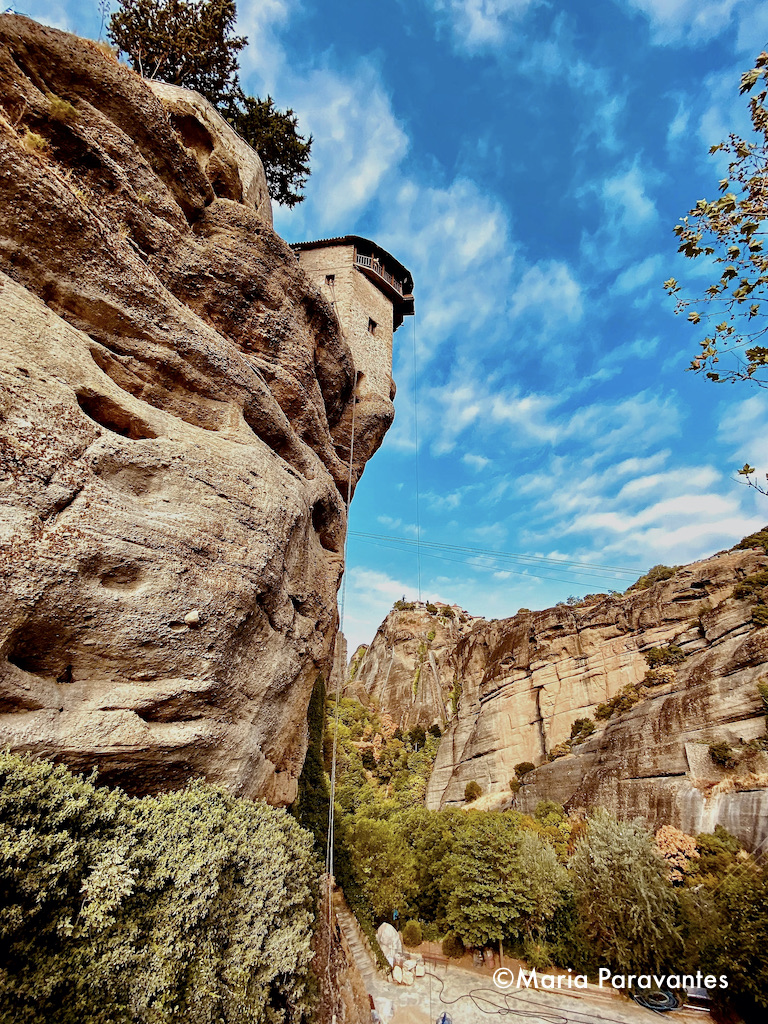
The word “Meteora” derives from the Greek “meteoros”, which means to “float or be suspended in air”. This is also where the English word “meteor” comes from. At the top of these astounding sandstone boulders you can see monasteries. Way back in the 9th century, some daring ascetics and hermits eager to get away from the madness of life first hid in the cavities and hollows of the massive rocks. Eventually, around the 11th century, they decided to create monasteries where they sought peace and quiet and a connection with god.
At some point in time there were at least 24 monasteries operating on the Meteora cliffs. Today only six remain open – four with monks and two with nuns. In Greek, the perched Meteora monasteries are also referred to as “aetofolies”, which means “eagle nests”. And very true, the monasteries all offer breathtaking bird’s eye views of the Thessaly valley below and the proud Pindos Mountains. Regardless of faith or whether you are a believer at all, a visit to the monasteries of Meteora is an absolute must and one of the five “should-do” things in Greece.
👉🏼 Don’t have time to read the whole post? Start planning
Ladders of Rope, Baskets of Straw & Faith
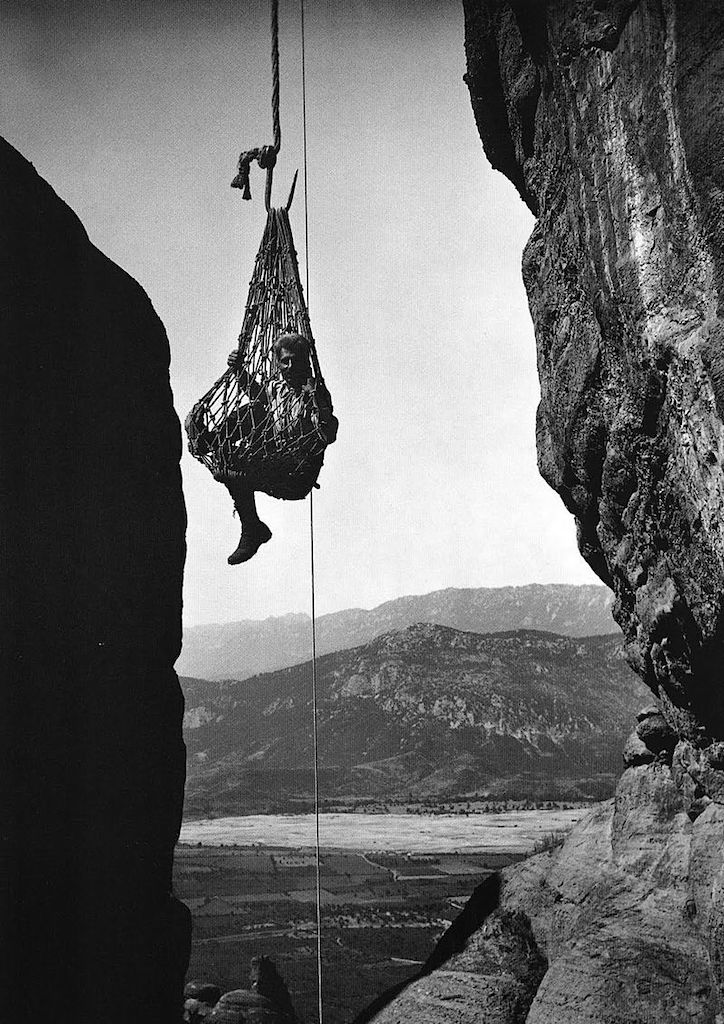
Reaching the monasteries in the past was no easy matter. Yes, today you can drive up some 600 meters, and of course, walk at least 100 steps, but not so long ago, the monks and few pilgrims would access the Meteora monasteries by dangling ladders made of rope or by hanging baskets or nets which were pulled up by the monks. Scary to say the least. You definitely needed to trust and have faith because as one abbot put it: the ropes were replaced only “when the Lord let them break”.
I actually had a chance to see one of the spots where the baskets were hoisted … needless to say, I held my breath and very slowly took a step back. Goods also reached the monasteries in the same way and this was also done for protection. This changed years later in the 1920s when steps were carved into the rocks and tunnels opened which left the monasteries vulnerable to attacks and ransacking. During WWII, the monasteries were invaded by the Nazis who also looted dozens of ecclesiastical art works, icons and rare manuscripts.
☞A map of Greece will definitely come in handy. I recommend you get this easy-to-read and detailed waterproof adventure map of Greece by experts NatGeo. A great tool!
The Meteora Monasteries
The monasteries of Meteora are the second largest and most important cluster of Greek Orthodox monasteries in Greece after Mount Athos.
The six operating monasteries were built on top of the sandstone boulders overlooking the valley below. Officially, the first Meteora monastery was created by Saint Athanasios of Meteora, who chose the “Platy Litho” (wide rock) cliff to create the Megalo Meteoro in 1344. He also was the one who named massive stones “meteora”. The monasteries were complete communities with their own library, hospital, kitchen, seniors space, and of course, chapels and living areas.
The Monasteries of Meteora are:
1. The Megalo Meteoro
The Great Meteoron (in English) dedicated to the Transfiguration of the Savior) was built in the mid-1500s and is the largest monastery of the Meteora cluster. Besides the beautiful art and iconography, dozens of rare written treasures have been safeguarded in its library.
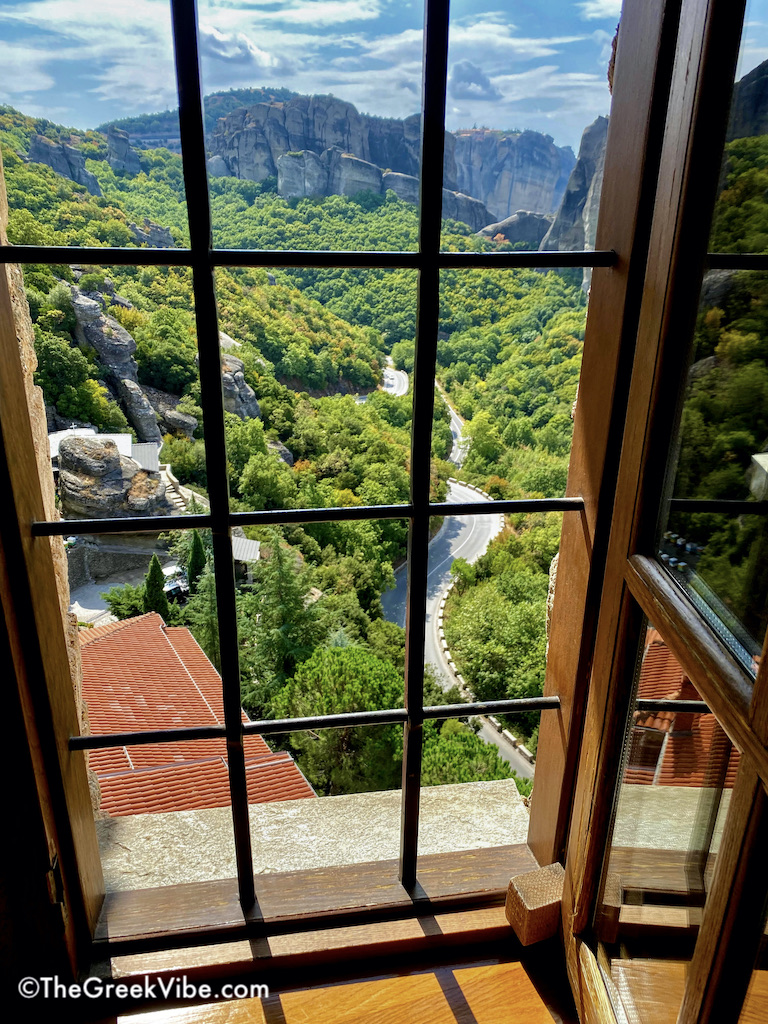
2. The Monastery of Varlaam
In 1350 the hermit Varlaam climbed the cliff and created the Monastery of Varlaam. Today you will need to climb 146 steep steps to get there but it’s worth the effort especially for its frescoes and collection of rare manuscripts. While there you will get to see the 12,000 liter barrel where the monks preserved rain water as well as tower where they hoisted materials. You will also be able to see brass, ceramic and wooden cooking utensils.
3. The Monastery of Roussanou (nunnery)
This monastery was established in 1527-1529 and its patron saint is Agia Varvara. The small monastery is worth visiting to see its post-Byzantine frescoes and art work and its beautiful vistas.
4. The Monastery of Agios Nikolaos tou Anapafsa (St Nicholas)
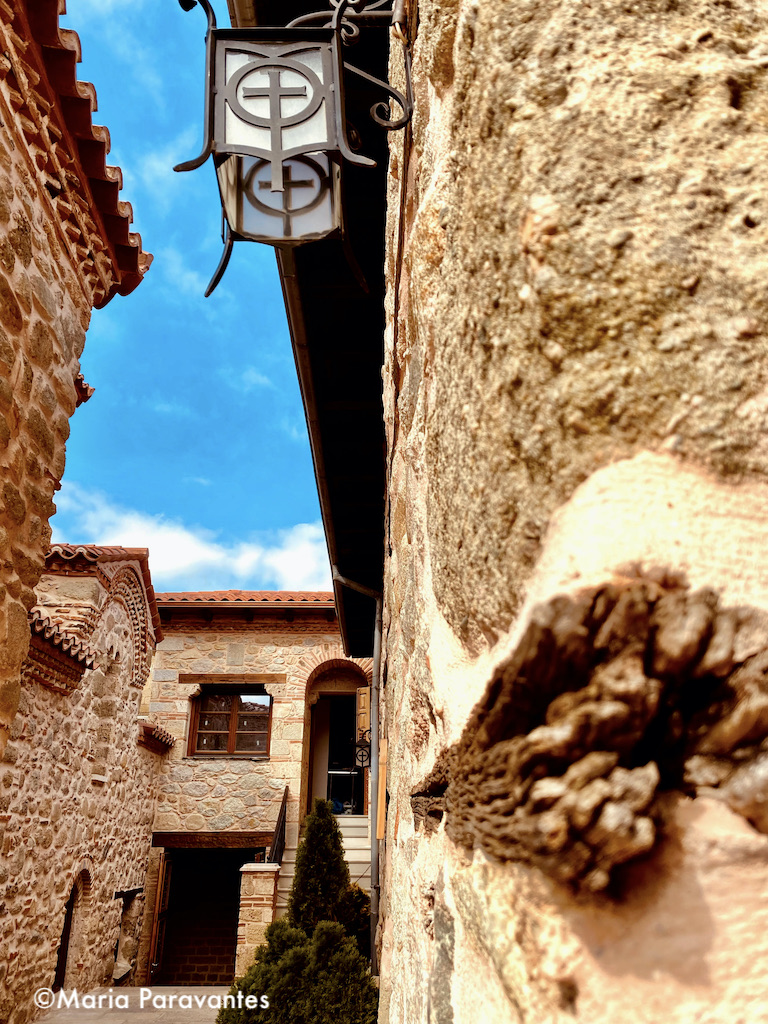
This is the first monastery you come across on your way up and is constructed on three levels due to the vertical rock surface. The word “anapafsa” means to “rest” in Greek. In this monastery too you will see beautiful art works created by a Cretan iconographer, Theophanis, who was also a monk and who has painted frescoes at Mt Athos monasteries.
5. The Monastery of Agia Triada (the Holy Trinity)
Built in the mid-1400s, the Monastery of Agia Triada is also built on a steep cliff and you will have to walk up 140 steps to get there. Here too, monks would climb up hanging ladders to reach their home. While there you are reminded that “Love endures all things” as the words of Apostle Paul to the Corinthians are carved in wood.
6. The Monastery of Agios Stefanos (nunnery)
This massive monastery one of the largest on Meteora rocks offers spectacular panoramic views of Kalambaka and the plain below. The monastery was initially run by monks but after 1961 nuns took over. Besides the beautiful woodwork adorned with marble and ivory, you will also see rare icons and silver-plated gospels.
👉🏼 Dream of visiting Greece? Start planning
Meteora – A Natural & Cultural Wonder
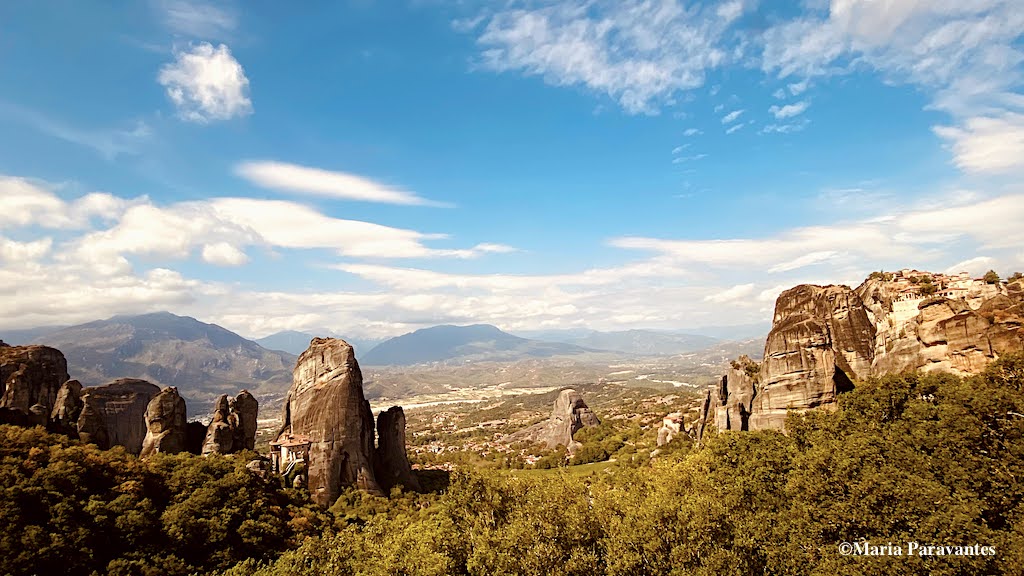
As you will see for yourself, the precipitous bluffs are as if carved by a godly hand to remind us all here on this planet that the universe is grander than what we can even begin to conceive.
Realizing the importance of the site, in 1988 UNESCO added Meteora to its list of World Heritage Sites. UNESCO describes the “columns in the sky” and the monasteries “built under impossible conditions” as a unique artistic achievement and a prime example of architectural transformation. Not to mention its geological and natural significance. Rich foliage continues to grow from the rock walls nourished by the water that runs through the cracks and crevices.
The region around the Meteora, which includes the Pineios River and the Pindus Mountains is also preserved under the EU’s Natura 2000 nature protection program.
Culturally speaking, Meteora has not only served as an Orthodox community but as such also preserved exquisite works of faith and art including post-Byzantine frescoes, icons, manuscripts, woodcarvings and other treasures.
The sacred rocks also served as a “safe place” for many of Greece’s visionaries, poets, writers, artists, and thinkers who sought shelter in the Meteora monasteries where they were free to create in safety during the times of the Ottoman Turkish rule in the 18th century as well as during World War II and the Greek civil war.
► Working Remotely from Greece: All You Need to Know
Meteora: A Rock Climber’s Playground
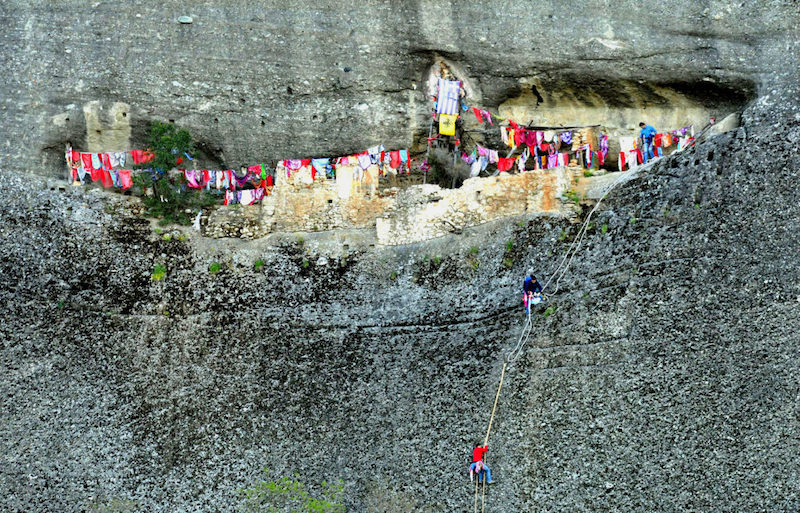
Apart from the monks and hermits who first overcame their fears and took shelter in the Meteora caves, the area has also attracted adventurers of all sorts over the years.
It all started in the 17th century, when according to legend a local Muslim villager lost the use of his hand after he cut down a tree near the lone chapel of Agios Georgios (St George) which was built in a crag. In an attempt to express repentance, the man climbed up and offered his wife’s valuable “yashmak” or veil. The saint forgave him and he got his hand back.
Ever since, every year on St George’s name day (usually in April), daring rock climbers from Kalambaka commemorate the miracle by climbing the precipitous cliff using ropes. The goal is to reach the cave, light a candle and leave behind a handkerchief. That’s why today the spot is known as “Agios Georgios o Mandilaras” (St George of the Handkerchiefs). When you pass by you will see dozens of colorful scarfs, bandannas and wraps hanging from the cliff.
In the last decades, the Meteora cliffs have become a rock climber’s heaven. Athletes from far and wide come here to test their mettle. If climbing is your thing and you’re looking to get the thrill, book with a guide (equipment included) and take a dare. Of course, the monks are not very fond of the situation as it has led to crowds and inevitably noise and pollution, disrupting the peaceful surroundings.
► How To Pick The Greek Island That’s Perfect For You
Meteora Trivia
You think you know this exciting place from somewhere? Well you probably do! Back in the 1980s, world-famous secret agent 007 aka James Bond – featured Meteora and particularly the Monastery of Agia Triada for the needs of Hollywood blockbuster For Your Eyes Only.
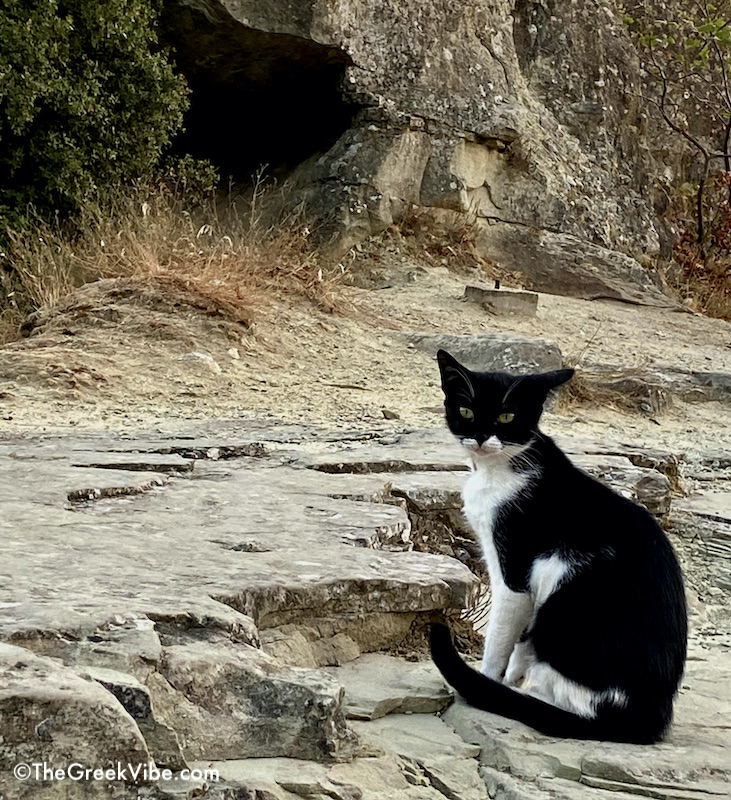
– Other famous movies shot in Meteora include the Tintin and the Golden Fleece and 1957 film Boy on a Dolphin featuring Sophia Loren.
– The Eyrie, the main stronghold of House Arryn, located thousands of feet above the valley in the HBO series Game of Thrones was inspired by the Meteora.
– Michina Town, the anime-exclusive location of Pokémon: Arceus and the Jewel of Life is also inspired by Meteora.
– American television series The Young Indiana Jones Chronicles feature Meteora
– The amazing site is also behind the French comic book series “Le Décalogue” and the main location in fiction book “The Spook’s Sacrifice”
– Elysium in Assassin’s Creed Odyssey “The Fate of Atlantis” was inspired by Meteora.
– The “Sanctuary” in “The Call of Duty: Modern Warfare 3 DLC Map” is set in the monasteries of the Meteora.
– Linkin Park named their 2003 album after the Greek site.
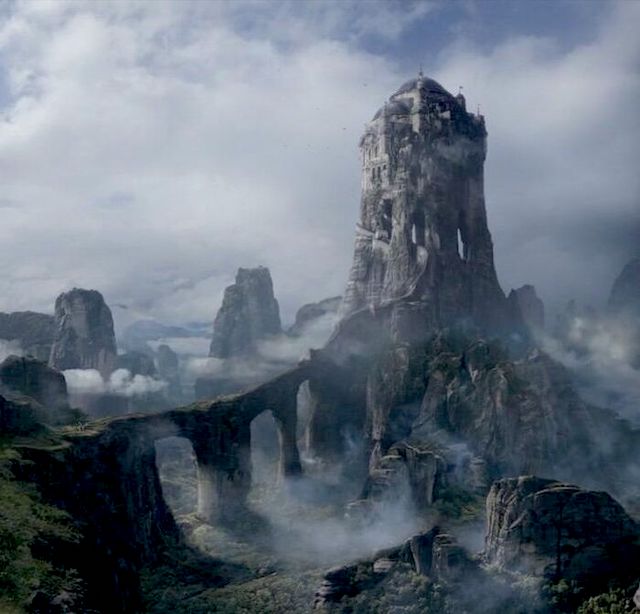
– Japanese professional wrestler Nobuhiko Oshima, aka Cima in the ring, named the “Meteora attack” – a flying double knee drop – after the site in Central Greece because this is where he had popped the question to his wife.
– The “St. Francis’ Folly” level of 1996 Tomb Raider game and its 2007 remake were also inspired by the lofty monasteries of Meteora.
– Meteora was bombed and its monasteries looted in World War II.
– The Meteora monasteries also feature in 1976 action film Sky Riders starring James Coburn.
– The first female to be allowed into the Megalo Meteoro Monastery was Queen Marie of Romania in 1921.
– The finger of St John and the shoulder blade of St Andrew are said to be in the Meteora monasteries.
– Despite being “rocked” by an earthquake in 1954, the massive Meteora pillars are still standing.
► 25 Things You Should Know Before You Plan Your Trip to Greece
Visiting Meteora: Maria’s Tips
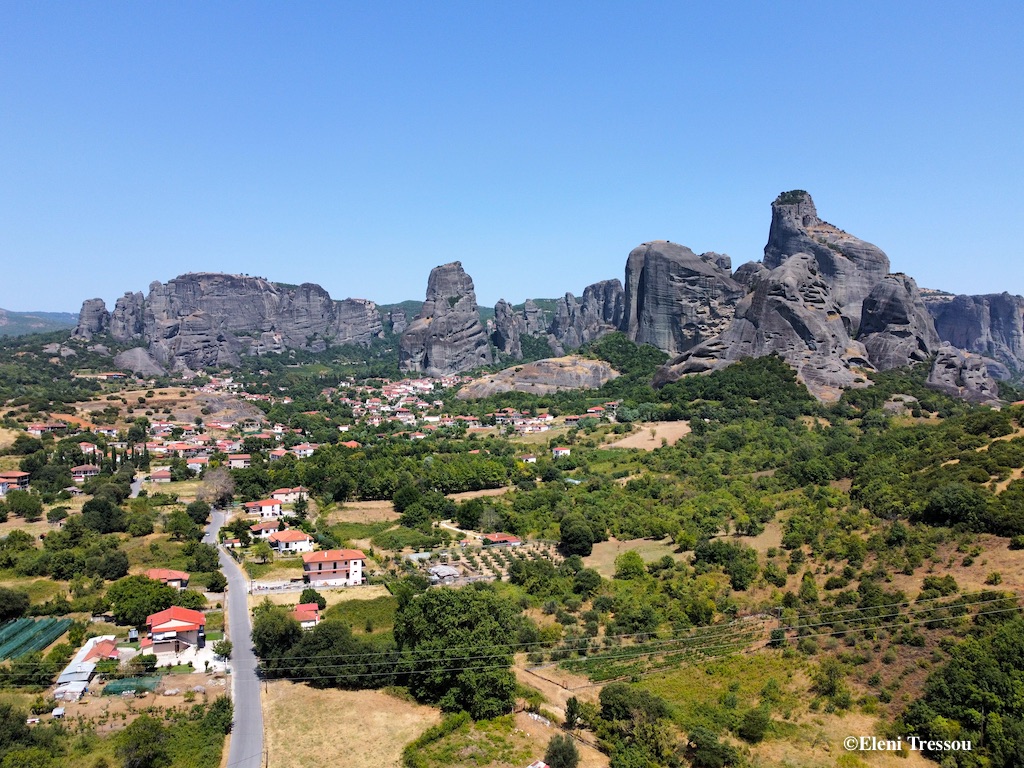
➣ You can get to Meteora by car or bus. The trip is about four hours (347km).
➣ The best time to visit is in the spring or fall when the weather is mild and the colors vivid and there are fewer tourists.
➣ Visit Meteora during Orthodox Easter for a unique experience.
►5 Perfect Short Day Trips Out of Athens
➣ Spend some time just sitting on one of the cliffs and looking down. Breathe in the calmness and let the wonderful energy of this special location heal all hurts.
➣ Stay in Kastraki, the tiny town at the foot of the towering Meteora cliffs. This traditional village was built by Epirot settlers who fled to the region to get away from the mighty Ottoman Turk Ali Pasha of Ioannina.
➣ As one would expect, the Meteora pillars are a rock climber’s paradise. But you can engage in many other outdoor activities in the wider region including hiking, mountain biking, and rafting.
➣ Each of the six monasteries are open and closed to the public on different days. A good day to visit would be Sunday. Before visiting check the opening hours.
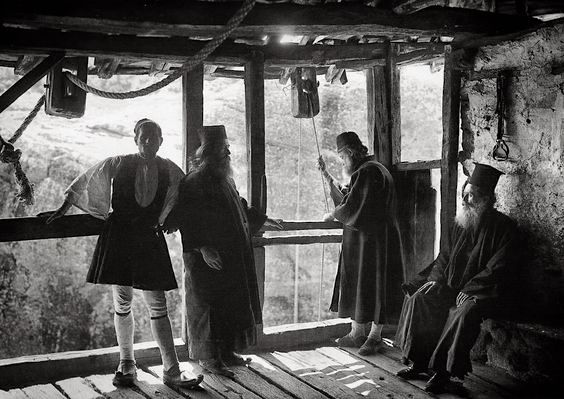
➣ You can actually hike your way from Kalambaka or Kastraki to some of the monasteries such as Agia Triada or Agios Nikolaos (ask the locals, monks or nuns for directions). You can also book a level 1 – 4-hour hiking tour of Meteora with a guide.
➣ There is a very small charge -around 3 euros- for visitors to the monasteries
➣ Attention! There is a dress code that applies to both males and females. Men are not allowed to where shorts and women must wear a dress. Because times have changed and most of us do not wear dresses, you will be given a garment at the entrance. I suggest you bring with you a sarong or something you can wear as a wrap-around.
➣ Agios Stefanos monastery is wheel-chair accessible and the easier to get to.
➣ Access to the monasteries requires strong knees and patience. Expect to climb stairs – no more than 300 steps – and then cross suspended bridges
► Off to Greece? Make Sure to Pack These Useful Items
➣ Make sure to buy high quality aromatic frankincense made by the nuns and monks on sale in the monasteries.
➣While in the region, make sure to visit the pre-historic Cave of Theopetra, located some 4km from Kalambaka. Excavation work in the cave found that human beings lived there some 130,000 years ago shedding insight on pre-historic Greece.
➣What to eat? The wider region is known for its fine sausages, hilopites pasta, red wines, spoon sweets, herbs, but also make sure to try locally-made Kliafa refreshments – lemon, orange and cherry soda, all sorts of pies (pittes) and particularly the traditional “batzina”(pumpkin and cheese pie), “galotopita” (a sweet custard pie), “plastos” greens pie, rooster with hilopites in wine sauce, trachanas soup with rooster or chicken, roast lamb, and my favorite karydopita (walnut cake in syrup).
Quick Links for Your Meteora Vacation
🏨 Find a great place to stay in Kalambaka and the best deals
🛫 Book the cheapest flights on Kayak
🚙 Rent a car with the folks who do it best.
🧗🏼 Plan fun things to do & exciting adventures with the experts
*The Greek Vibe may receive commissions on purchases made through affiliates and partner links. Clicking affiliate or partner links comes at no additional cost to you but goes a long way in supporting our work.
♫ I end today’s post with the music of Greek composer Stamatis Spanoudakis: “Mystic Hours” from his album “Bathed in the Sun”. The perfect musical backdrop to your Meteora experience.
Enjoy!
❤️ Follow The Greek Vibe on TikTok too!
Enjoyed this Post? Share and Pin it!
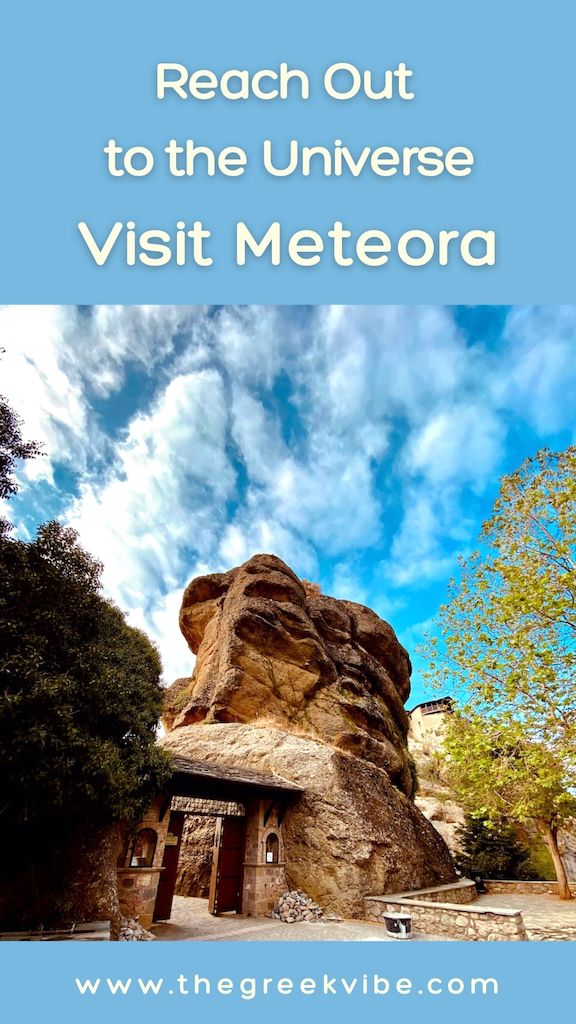

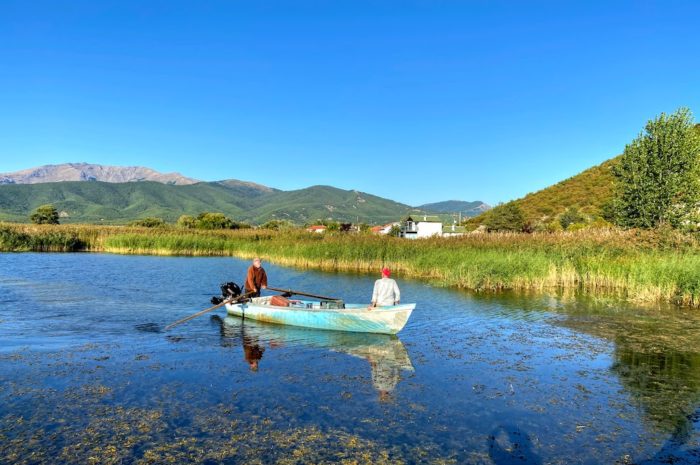
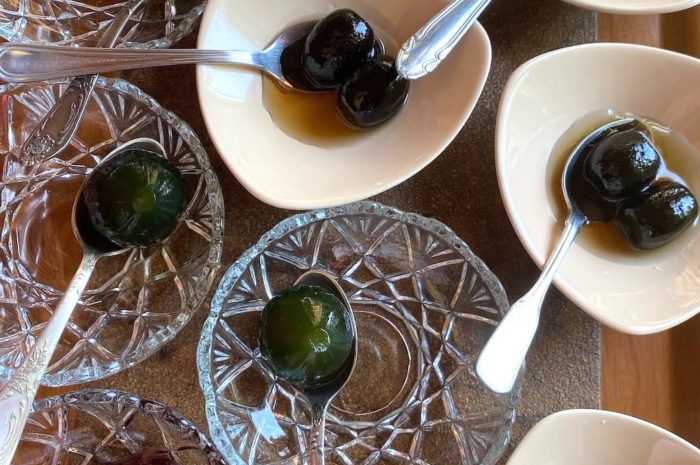
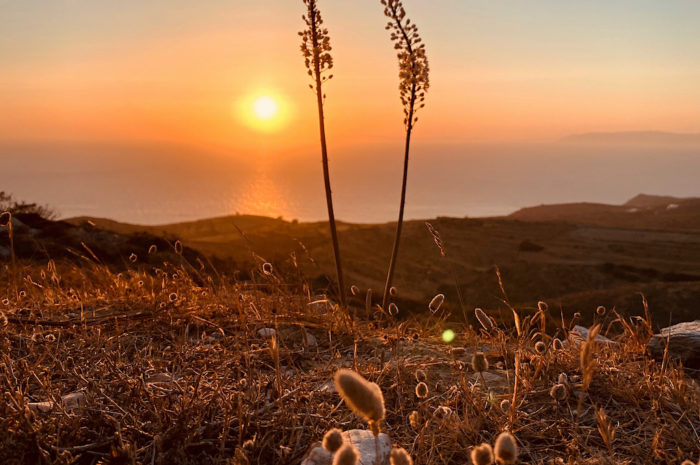
Maria,
Wonderful information as usual.
I teach Greek in Philadelphia and my students love your newsletter.
I did notice a typo in this paragraph last line: Japanese professional wrestler Nobuhiko Oshima, aka Cima in the ring, named the “Meteora attack” – a flying double knee drop – after the site in Central Greece because this is where he had pooped the question to his wife.
So you can update it.
Και πάλι ευχαριστω για την θαυμάσια δουλειά που κανείς!
Dear Lina, thank you so much for the observation. And indeed what a spelling mistake! Correction made. On that note, I am very happy to hear that you and your students enjoy reading The Greek Vibe. My warmest greetings to Philadelphia.